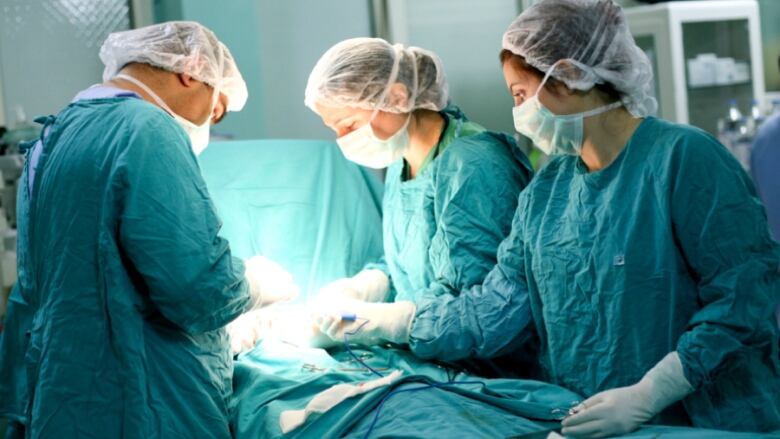Objects left in Alberta surgical patients 3.1 times more often than OECD average, report says
'Sponges sometimes get left in. It's often things that were on the surgical tray'

Alberta's hospital safety record pales in comparison withsimilar jurisdictions around the world, according to a new report.
The data released Friday by the Canadian Institute for Health Information (CIHI) examines select patient safety indicators, such as the rate of people who develop blood clots that travel totheir lungs after hip and knee replacements.
In Italy, the rate is 69 for every 100,000 patients. The rate for Canada is 642. In Alberta, it's 997.
The report found that patient safety in Alberta hospitals is lower than other developed countries within the Organization for Economic Co-operation and Development (OECD), says Tracy Johnson, director of health systems analysis for CIHI.
She says for every 100,000 Albertans who had medical procedures from 2014 to 2016, statistically, 13.2 later found out that an object was left inside them. That's above the Canadian average of 9.3 and more than three times the average of other OECD countries.
"Scissors sometimes get left in. Clips sometimes get left in. Sponges sometimes get left in. It's often things that were on the surgical tray," she said.
High rate of obstetric trauma
The data also found that both Canada and Alberta, specifically, far exceed the OECD rate for vaginal deliveries that resulted in third- or fourth-degree obstetric trauma.
In Canada, 16.9 per 100instrument-assisted vaginal deliveries involved obstetric trauma. In Alberta the rate was 14.5, and the OECD average is 5.7, the report says.
Johnson says as awareness about patient safety grows, it's possible more errors are being reported.
"Often, things have to get worse before they get better. So is that some of what we're seeing in this data?"
In a written statement, Alberta Health Services says work is already underway to address concerns raised in the report, including theadoption of the Safe Surgery Checklist four years ago.
"In 2014/15, errors averted were reported in four per cent of all surgeries as a result of the checklist. With ongoing monitoring, that number has since improved to below two per cent," AHS said.
Alberta officials are also collaborating with the Canadian Patient Safety Institute on other initiatives, including the development of an action plan for patient safety in the areas of medications, surgeryand infection prevention and control.
With files from Jennifer Lee












_(720p).jpg)


 OFFICIAL HD MUSIC VIDEO.jpg)
.jpg)



























































































